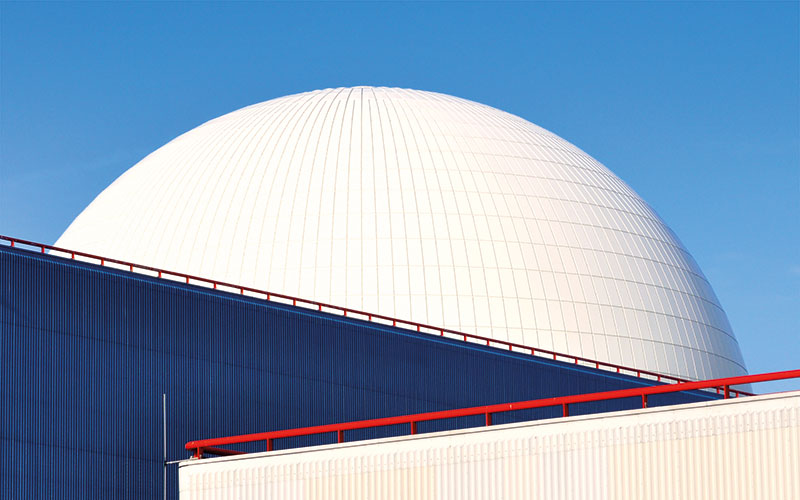Using nuclear in a new way
Hydrogen from nuclear power could be a new source of low-carbon energy, says Xavier Mamo at EDF Energy

Navigating the disruption of climate change, EDF Energy R&D is leading the innovative Hydrogen to Heysham (H2H) project, which is looking at generating low-carbon, low-cost,
local hydrogen from Heysham Nuclear Power Stations.
Clean energy
Hydrogen could help the UK with its targets to reduce emissions by 2050 and to reduce its reliance on fossil fuels. ‘Hydrogen gas has long been talked about as a new source of clean energy. When hydrogen burns, virtually the only by-product it creates is water,’ Mr Mamo explains. ‘It is one of the new ways we could provide low-carbon energy for our factories, cars and home heating.’
According to the UK government, 10% of the UK’s emissions come from energy-intensive industries such as glass and cement, heat and transport. These emissions could be lowered by replacing natural gas with hydrogen, which could also create two million jobs and £170bn of annual exports, by 2030, according to UK Climate Change Minister Lord Duncan.
Backing hydrogen
Despite these figures, the Committee on Climate Change concluded in its Net Zero report that the development of hydrogen technology in the UK had been too slow.
To speed up development, the UK government is now investing £390m into the £40m Hydrogen and Fuel Switching Innovation Fund, a £100m competition, and the £250m Clean Steel Fund (as the iron and steel industry accounts for 15% of industry emissions). ‘It’s great news the government has announced funding for a whole series of projects to explore how the use of hydrogen can be rolled out across the UK,’ says Mr Mamo.
However, there is a caveat. The International Energy Agency estimates that hydrogen production worldwide – mostly for producing fertilisers, and use in oil refining – is responsible for around 830m tonnes of carbon emissions, explains Mr Mamo. This is because the fossil fuel process often uses polluting methane gas. These emissions ‘can be removed from the process, but doing so adds significantly to the cost,’ says Mr Mamo.
Hydrogen from nuclear
To save emissions and cost, the Hydrogen to Heysham (H2H) project led by EDF Energy will use a different method: a lower electricity price can be achieved by connecting the electrolyser directly to the nuclear power plant, enabling the production of hydrogen at a competitive cost. This also eliminates intermittency (from renewables), making hydrogen scaleable, affordable and low-carbon. ‘We believe the constant supply of low-carbon power from nuclear will be more cost-effective than renewables,’ says Mr Mamo.
EDF is first conducting a study to look into the commercial and technical possibilities.‘After that, we hope to set up a demonstrator project on the Heysham site which would begin operating in 2020,’ says Mr Mamo. ‘These are early days but, ultimately, hydrogen production might be possible at all of our eight nuclear power stations around the UK.’
The demonstrator phase aims to establish Lancaster as a local hub for hydrogen, serving multiple applications across Lancashire. ‘Hydrogen could be used for local industry and transport, and it might one day heat some of the city’s homes,’ says Mr Mamo.
Picture Credit | Getty






Follow us
Advertise
Free e-Newsletter